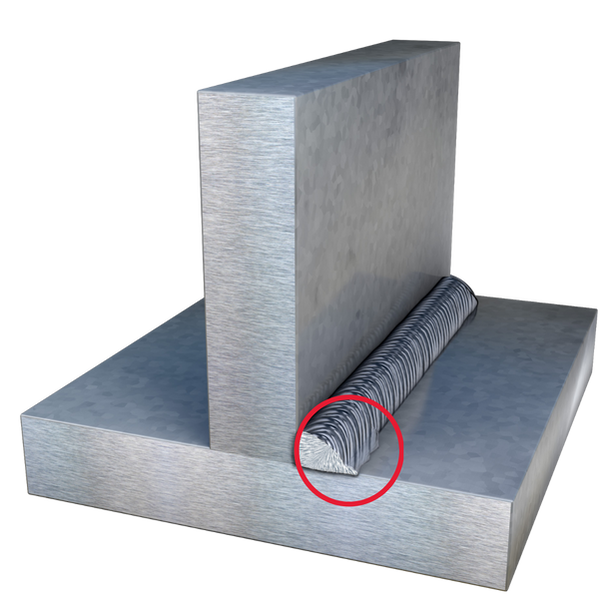Preventing Weld Undercut Made Easy: Secret Techniques Revealed
Preventing Weld Undercut Made Easy: Secret Techniques Revealed
Blog Article
Grasping the Art of Welding: Just How to Avoid Undercut Welding Issues for Flawless Construction Results
By comprehending the origin causes of undercut welding and carrying out reliable techniques to prevent it, welders can elevate their craft to new levels of excellence. In the quest of remarkable manufacture outcomes, understanding the art of welding to stay clear of undercut concerns is not simply an ability yet a necessity for those striving for perfection in their job.
Understanding Undercut Welding

To avoid undercut welding, welders should make sure correct welding specifications, such as readjusting the current, voltage, traveling rate, and preserving the proper electrode angle. Additionally, utilizing the appropriate welding method for the details joint configuration is necessary. Employing weaving movements or backstepping strategies can help guarantee appropriate weld steel deposition and reduce the probability of undercut development. Regular evaluation of welds throughout and after the welding procedure is also important to capture any kind of undercut very early and make required modifications to protect against more defects. Preventing weld undercut. By comprehending the reasons for undercut welding and applying preventative measures, welders can achieve top notch, structurally audio welds.
Sources Of Undercut in Welding
Recognizing the variables that add to damage in welding is vital for welders to generate premium, structurally sound welds. When the weld steel does not appropriately fill up the groove developed between the base steel and the formerly deposited weld metal, undercutting takes place. Numerous aspects can result in undercut in welding. One usual reason is extreme heat input. Welding at high temperature levels for extensive durations can result in the base steel thawing greater than desired, bring about damage. Inadequate welding inaccurate or current welding rate can likewise contribute to damage. Inadequate current may not provide adequate warm to thaw the base and filler steels effectively, while extreme rate can stop proper blend, triggering undercut. Additionally, inappropriate electrode angles or inaccurate lantern control techniques can develop areas of reduced weld metal deposition, promoting undercut. Recognizing these reasons and executing correct welding strategies can aid protect against undercutting concerns, making sure durable and solid welds.
Methods to avoid Undercutting

To minimize the threat of damaging in welding, welders can use critical welding strategies intended at boosting the top quality and honesty of the weld joints. Additionally, using the correct welding technique for the specific joint configuration, such as weave or stringer grains, can add to lowering damaging.
Using back-step welding techniques and managing the weld bead account can also aid disperse heat equally and lessen the risk of undercut. Routine inspection of the weld joint throughout and after welding, as well as implementing high quality assurance procedures, can aid in resolving and finding undercutting concerns promptly.
Relevance of Proper Welding Criteria
Selecting and keeping appropriate welding criteria is vital for attaining effective welds with minimal flaws. Welding criteria refer to variables such as voltage, existing, take a trip rate, electrode angle, and shielding gas flow price that straight influence the welding procedure. These parameters have to be carefully changed based upon the sort of product being welded, its density, and the welding technique employed.
Appropriate welding criteria make certain the correct amount of warmth is put on melt the base metals and filler material evenly. If the criteria are established expensive, it can result in extreme warm input, triggering burn-through, distortion, or spatter. On the Resources other hand, if the specifications are too low, incomplete blend, absence of infiltration, or undercutting may occur.
Quality Control in Welding Procedures

Conclusion
Finally, grasping the art of welding requires an extensive understanding of undercut welding, its causes, and strategies to avoid it. By guaranteeing proper welding criteria and carrying out quality guarantee methods, flawless manufacture results can be accomplished. It is vital for welders to consistently make every effort for excellence in their welding operations to prevent undercut issues and generate premium welds.
Undercut welding, an usual flaw in welding processes, takes place when the weld metal does not correctly load the groove and leaves a groove or anxiety along the bonded joint.To avoid undercut welding, welders need to make sure proper welding specifications, such as adjusting the present, voltage, traveling speed, and preserving the correct electrode angle. Insufficient welding wrong or current welding rate can additionally contribute to damage.To mitigate the danger of damaging in welding, welders can employ tactical welding strategies aimed at improving the top quality and integrity of the weld joints.In final thought, understanding the art of welding requires a complete understanding of undercut welding, its reasons, and techniques to avoid it.
Report this page